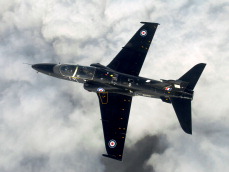WASHINGTON, Dec. 20, 2011 — Defense Department and National Guard support to Southwest Border security will change in the next few months from a ground effort to primarily air, Defense and Homeland Security officials said today.
U.S. Customs and Border Protection is the lead federal agency charged with defending the southwest U.S border with Mexico, but the Defense Department, specifically the National Guard, works closely in support of the effort, and has since 2010.
But the mission has changed, said Paul Stockton, assistant secretary of defense for homeland defense and Americas’ security affairs. Customs, he said, has beefed up its manpower and technical abilities and no longer needs the numbers of National Guard personnel on the ground.
“CBP has changed the kind of support that it is asking the Department of Defense to provide,” he said, “and DOD is transitioning to much more effective support … that not only matches up to what CBP needs, but provides more flexibility against an adaptive adversary.”
The border is better protected because of the cooperative relationship between defense and homeland security, said David Aguilar, the Customs and Border Protection agency’s deputy commissioner.
“Over the last year, we had over 1,200 National Guard representatives on the line with us,” Aguilar said. Under the new system, he said, fewer than 300 Guardsmen are needed.
The Guardsmen worked with Border Police to man entry identification teams. These are fixed positions and were what was required at the time. But times change, and now the Border Patrol requires aerial platforms to provide intelligence, surveillance, reconnaissance and mobility ability.
This mission will begin around the first of the year and completely transition by March, Aguilar said.
“There will be a ramp down of the static [entry identification teams] and the boots on the ground related to those [teams], but a ramp-up on the aerial support and platforms,” he said.
Border Patrol Chief Michael Fisher said the patrol has grown to 21,450 officers. The aviation assets will focus at first on detection and monitoring capabilities, he said. Guardsmen will fly specially equipped OH-58 and UH-72 helicopters with a detection radius of 6 and 12 nautical miles, respectively. In addition, Guardsmen will fly RC-26 fixed-wing aircraft with detection and monitoring capability of 12 nautical miles.
Such capability will enable the Border Patrol to work in more challenging terrain and give the patrol a faster reaction time to prevent illegal activities. These airborne assets will be able to look way over the horizon of a person on the ground and be able to flow personnel into an area.
Defense officials will continue to work with Customs and Border Protection officials to figure the mix of aircraft and capabilities and where the aircraft and ground stations will be.
The new National Guard mission will end Dec. 31, 2012, officials said.
Source:
U.S. Department of Defense
Office of the Assistant Secretary of Defense (Public Affairs)

 von
von 